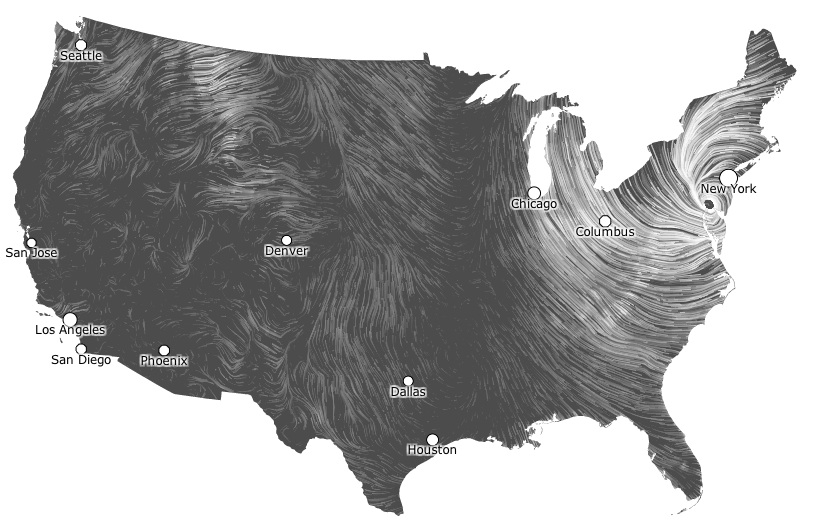How Sandy Compares to the Worst US Natural Disasters

The damage caused by superstorm Sandy in the United States is still being catalogued. But so far, it seems the storm will enter the pantheon of top disasters the country has ever faced.
"Make no mistake about it, this is a devastating storm, maybe the worst we have ever experienced," New York Mayor Michael Bloomberg said today (Oct. 30).
Flooding caused major damage along the East Coast, but wind and fire contributed, too. According to Bloomberg, a single fire in Queens caused by the storm destroyed more than 80 homes. As of Tuesday morning, the storm's U.S. death toll had reached 38, according to the Associated Press, and more than 8.2 million people remained without power.
Storm deaths
With its urban flooding, Sandy brought to mind Katrina, the Category 5 hurricane that struck the Gulf Coast in 2005. Rains from Katrina overwhelmed Louisiana's levee system, inundating New Orleans with water. However, Katrina's death toll dwarfed Sandy's, with the National Hurricane Center putting the death toll from that storm at 1,833.
Earlier storms have been even deadlier: A massive storm hit Galveston, Texas in 1900 and killed at least 8,000 people. And in 1928, the Lake Okeechobee, Fla., hurricane killed more than 2,500, according to the National Hurricane Center. Two other storms, both in 1893, may also have killed more people each than Katrina. [The 10 Worst U.S. Natural Disasters]
Other disasters
Sign up for the Live Science daily newsletter now
Get the world’s most fascinating discoveries delivered straight to your inbox.
Storms aren't the only disasters to hit highly populated areas. In 1906, the Great San Francisco Earthquake struck California's Bay Area. The quake, an estimated 7.7- to 7.9-magnitude, was destructive enough, but even worse was the fire that followed, sparked by broken gas lines. About 3,000 people died, and 225,000 were made homeless by the blaze.
Other disasters are known not for their death toll, but for their cost. The Northridge earthquake, a magnitude-6.7 quake that struck Los Angeles in 1994, killed 58 people, according to the National Institute of Standards and Technology (NIST), and the destruction caused by the quake ended up costing at least $25 billion (in 1994 dollars), according to initial Federal Emergency Management Agency (FEMA) reports. A 1998 study of the quake by Caltech researchers suggested that if indirect economic losses were included, the quake cost could reach $40 billion.
Hurricane Katrina caused an estimated $108 billion in damage, according to a 2005 National Hurricane Center report.
Where Sandy does stand out is in meteorological records. The storm surge pushed water to a record 13.88 feet (4.23 meters) at Battery Park, N.Y., beating a previous record of 10.02 feet (3.05 m) set by Hurricane Donna in 1960 in the same place.
The storm broke pressure records as well, with the barometer hitting record low or near-record low pressures in New Jersey, Pennsylvania and Maryland. In Atlantic City, N.J., for example, the pressure hit 948 millibars, topping a previous record of 961 mb set in 1932. (A typical low-pressure system usually hits around 1,000 mb.)
Sandy was also extremely large, even for a hurricane. At its peak, the storm's hurricane-force winds extended 175 miles (280 km) from its center, with tropical storm-force winds felt 520 miles (835 km) away. That puts Sandy at No. 2 in terms of shear size since 1988, according to Weather Underground. The only storm that beats it in size is 2001's Hurricane Olga, a late-season storm that did not make landfall.
Follow Stephanie Pappas on Twitter @sipappas or LiveScience @livescience. We're also on Facebook & Google+.

Stephanie Pappas is a contributing writer for Live Science, covering topics ranging from geoscience to archaeology to the human brain and behavior. She was previously a senior writer for Live Science but is now a freelancer based in Denver, Colorado, and regularly contributes to Scientific American and The Monitor, the monthly magazine of the American Psychological Association. Stephanie received a bachelor's degree in psychology from the University of South Carolina and a graduate certificate in science communication from the University of California, Santa Cruz.










